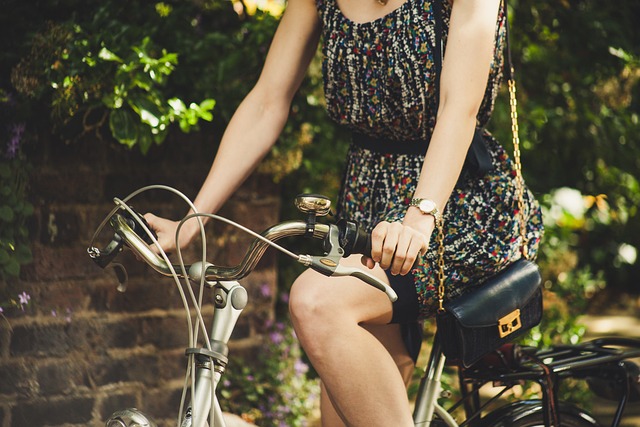6 Tips for Riding a Bike with Your Dog: Bikejoring - Expert Advice


1. Choose the Right Equipment
When it comes to riding a bike with your dog, it's important to have the right equipment. One of the most essential pieces of gear is a bike leash or attachment that allows you to safely secure your dog to your bike. Look for a leash that is specifically designed for bikejoring, as it will have features such as shock absorption and a quick-release mechanism in case of emergencies.
Additionally, make sure your bike is in good working condition. Check the tires, brakes, and gears to ensure they are functioning properly. It's also a good idea to invest in a bike helmet for yourself and a dog harness that is comfortable and secure for your furry friend.
2. Start with Short Rides
Before embarking on long bike rides with your dog, it's important to start with short rides to get them accustomed to running alongside the bike. Begin by taking your dog on walks while holding the bike leash, gradually increasing the distance and speed. This will help your dog get used to the sensation of running alongside the bike and build their endurance.
During these initial rides, pay attention to your dog's behavior and body language. If they seem anxious or uncomfortable, take a break and try again later. It's important to go at a pace that is comfortable for both you and your dog.
3. Train Your Dog to Run Alongside the Bike
Proper training is crucial when it comes to riding a bike with your dog. Start by teaching your dog basic commands such as "heel" and "leave it." These commands will come in handy when you need to control your dog's movements while riding.
Gradually introduce your dog to the bike by having them walk alongside it while you push it. Reward them with treats and praise for staying by your side. Once they are comfortable with this, you can start riding at a slow pace, using the commands you have taught them to guide their movements.
Consistency is key when training your dog to run alongside the bike. Practice regularly and gradually increase the distance and speed as your dog becomes more comfortable and confident.
4. Use Proper Safety Gear
Safety should always be a top priority when riding a bike with your dog. Make sure both you and your dog are wearing appropriate safety gear. This includes a helmet for yourself and a secure harness for your dog.
Consider using reflective gear or lights to make yourself and your dog more visible, especially if you plan on riding during low-light conditions. It's also a good idea to attach a bell or horn to your bike to alert pedestrians and other cyclists of your presence.
Always carry a first aid kit with you in case of any accidents or injuries. Familiarize yourself with basic first aid procedures for both humans and dogs.
5. Pay Attention to Your Dog's Needs
When riding a bike with your dog, it's important to pay attention to their needs and well-being. Make sure your dog is well-hydrated before and during the ride, especially on hot days. Bring along a collapsible water bowl and stop for water breaks as needed.
Take regular breaks to allow your dog to rest and sniff around. Remember that they are running alongside the bike and may need more frequent breaks than usual. Pay attention to any signs of fatigue or discomfort and adjust your ride accordingly.
It's also important to be mindful of the weather conditions. Avoid riding in extreme heat or cold, as it can be dangerous for both you and your dog. If the weather is unfavorable, consider postponing your ride or finding an indoor alternative.
6. Gradually Increase Distance and Difficulty
As your dog becomes more comfortable and experienced with riding alongside the bike, you can gradually increase the distance and difficulty of your rides. Start by adding a few extra minutes to your rides, then gradually increase the distance over time.
You can also introduce different terrains and obstacles to challenge your dog and keep them engaged. However, make sure to assess the difficulty level and ensure it is appropriate for your dog's size, breed, and fitness level.
Remember to always prioritize your dog's safety and well-being. If at any point your dog seems tired or overwhelmed, take a break or end the ride. It's better to err on the side of caution and gradually build up their endurance and confidence over time.
By following these 6 tips for riding a bike with your dog, you can enjoy a fun and safe biking experience together. Remember to choose the right equipment, start with short rides, train your dog properly, use proper safety gear, pay attention to your dog's needs, and gradually increase distance and difficulty. Happy biking!


Related posts